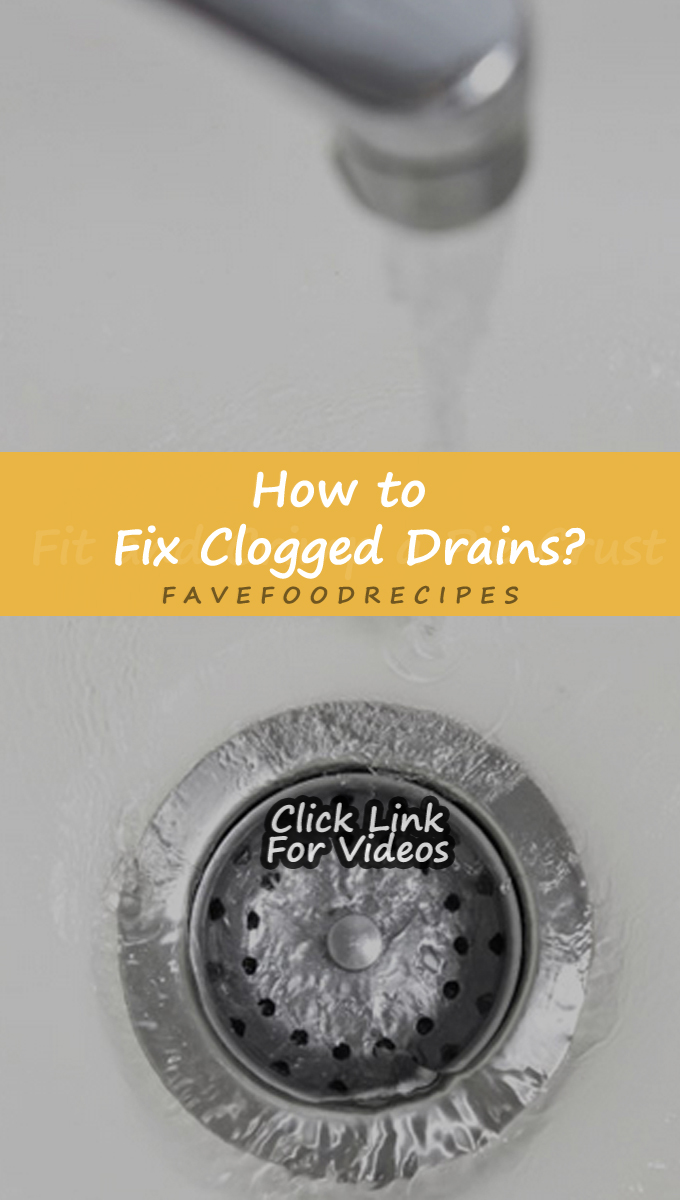There is nothing worse than jumping in the shower for a relaxing day long escape, only to look down and realize that you are standing in a few inches of water. Another not so happy moment? When your bin stops, your sink backs up not only with water, but also with bits of food. Whatever the case, one thing is certain: clogged drains are a major pain. But that doesn't always mean you have to call your plumber. Here's how to find out which clogs can be corrected by a novice, as well as tips on how to fix them without the help of a professional plumber.
However, if you find that your blockage does not move at all over a long period of time - we are talking about hours, not minutes - Calabrese urges you to put your pride aside and call a professional to keep it from s 'aggravate.
Bathroom sinks
These clogs can be caused by a number of things, including hair, hardened toothpaste, and the fallout from shaving. Fortunately, they are usually one of the easiest blockages to fight. "If you have a slow drain sink, one of the simplest things you can do to clean it is to mix half a cup of baking soda and half a cup of white vinegar," says George Calabrese, the owner of Fairfax, Virginia. of Calabrese plumbing. "Pour it into your sewer, let it sit and continue with a few liters of boiling water." He says it may take a few rinses over several days to completely clean it, but with each pass of the solution, the water should flow out faster.However, if you find that your blockage does not move at all over a long period of time - we are talking about hours, not minutes - Calabrese urges you to put your pride aside and call a professional to keep it from s 'aggravate.
Bath and shower drains
The main culprit in these situations is the hair, especially the long variety. "There is usually a cross under the drain plug where the hair tends to get caught," says Calabrese. If you can easily remove the drain plug, it says you can usually remove the blockage in a few minutes using needle-nose pliers - also work (don't use them on your face without rinsing them first ). On the other hand, if you remove the drain plug and don't see a strand of hair in plain sight, it may have sank into the depths of the pipes, making clogging more difficult. Although your first inclination is to pour Drano into the hole and hope for the best, it is wiser to stick it out. According to Calabrese, there are so many chemicals that damage the pipe system or end up burning your plumber when they come in to investigate.
Instead, he suggests keeping your home stocked with a Bio-Clean tub. "It is made with an all-natural enzyme that introduces good bacteria into the drainage system and will not damage the pipes at all," he says, noting that it is so clean that the inventor drinks it. ! "It takes time to work because it eats up the buildup that is in the drain, but it is also a fantastic maintenance product." With that in mind, Calabrese says that once your drains are open, you can use Bio-Clean once a week or every two weeks to keep them that way, without killing the fish or harming the environment as a whole.
Instead, he suggests keeping your home stocked with a Bio-Clean tub. "It is made with an all-natural enzyme that introduces good bacteria into the drainage system and will not damage the pipes at all," he says, noting that it is so clean that the inventor drinks it. ! "It takes time to work because it eats up the buildup that is in the drain, but it is also a fantastic maintenance product." With that in mind, Calabrese says that once your drains are open, you can use Bio-Clean once a week or every two weeks to keep them that way, without killing the fish or harming the environment as a whole.
Floor drains
If you have a working basement drain, Calabrese says it's time to bring out the baking soda and white vinegar, only this time, using a plunger. "Using a plunger can help because you can get great suction on a floor drain," he says. Another option is to completely remove the drain grid from the ground and insert a pipe into it. "Take an old towel and a screwdriver and place the towel around the pipe so that the water doesn't spray out of the hole," says Calabrese, noting that this will create a DIY pressure washer for the drain.Kitchen sinks
Grease and food are the main causes of blockage in kitchen sinks. This is why it is so important to scrape the crumbs off your plate and throw them in the trash before rinsing them well. Lots of people believe that's what waste disposal is for, but Calabrese quickly corrects this misconception - as well as the idea that you don't need to rinse dishes before putting them in the dishwasher. (another drain which can be blocked). Apart from prevention, when it comes to cleaning a kitchen sink plug, Calabrese recommends taking Bio-Clean or Dawn soap. "Fat is the number problem with kitchen sink drains and Dawn goes through it like nothing else," he explains. If none of these options work and you notice your gargoyle drain, Calabrese says it's time to call a professional.







